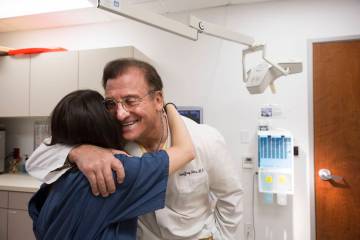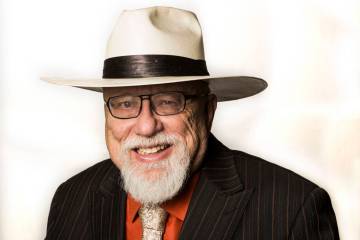On writing and race, teacher still knows best
Last week’s story about the increasing economic segregation of minority students in American public schools made me think about a school I attended, about a teacher I had.
About how lucky I had been.
It was 1960 in Flint, Michigan, then a thriving blue-collar metropolitan area where both white and black families made a middle class wage from the auto plants. Though families rarely mixed — plant workers from both races had migrated from the South, where racial strife was commonplace — white and black students of all means attended public school together.
To get to Bryant Junior High, five miles from my home, I frequently hitchhiked. There was little or no fear of being picked up by a killer then.
Whites playing country music on the radio picked me up. So did blacks playing rhythm and blues.
I’m sure people picked me up more readily that year — I was in the eighth grade — because of the way I dressed. Always a coat and tie, plus a topcoat when it was cold.
I dressed that way because of Mrs. Vivian Grice, the best teacher I ever had. School should mimic what was required in the business world, she said. Teachers had that power then. She dressed in business suits and heels.
If it weren’t for Mrs. Grice, who happened to be the first black woman and the first black adult I ever knew, chances are better than good that I wouldn’t be doing what I love to do — writing for a living.
I reached her by phone Monday. She’s 85 now, a widow 22 years retired. Her four children have blessed her with 13 grandchildren and five great-grandchildren. “I’m still kickin,’ but not very high,” she said.
Yes, she read the story about the overwhelming isolation of impoverished students of color in the public schools.
Data released by the Government Accountability Office show poor, black and Hispanic children are increasingly isolated from their white, affluent peers in the nation’s public schools. The number of high-poverty schools serving primarily black and Hispanic students more than doubled between 2001 and 2014. “High-poverty, majority-black and Hispanic schools were less likely to offer a full range of math and science courses than other schools, for example, and more likely to use expulsion and suspension as disciplinary tools, according to the GAO,” The Washington Post reported.
If there’s little or no lasting contact between students of different socioeconomic levels and races, Mrs. Grice said it’s almost impossible for those students to have access to powerful social networks, excellent teachers, challenging curricula and new technology.
“Segregation,” she said, “will always be unequal.”
It’s been 62 years since the U.S. Supreme Court declared that state laws establishing separate public schools for black and white students were unconstitutional.
We talk about a 2014 study by the Public Religion Research Institute that found 75 percent of white people don’t have any non-white friends. By comparison, the level of social racial homogeneity is 65 percent for black Americans and 46 percent for Hispanic Americans.
“When people don’t know each other, they fear each other,” she said.
As she talked, I could hear her voice from my eighth-grade class.
“We have less chance of ever finding the individuals who can change the course of our lives for the better by limiting our acquaintances and friends,” she said.
She changed my life for the better by working me as I had never been worked before.
Soon after I entered her classroom, she got my undivided attention. “Hello,” she said. “I’m Mrs. Grice. You’re going to write and then write some more in this class. You’ll write compositions until you think your hand is going to fall off. If it does, I’ll cry with you, but you’ll have to learn how to write with your other hand.”
I wrote three lengthy themes a week, kept a daily journal and often got up before dawn to rewrite. When my papers were returned, Mrs. Grice’s red markings seemed everywhere, noting missing commas and semicolons, misspelled words. Yet she always seemed to find a silver lining.
“People will lose track of what a great mind has to offer if you continue to write run-on sentences,” she wrote.
How I wanted to produce for her. She made me believe I could become a writer.
Mrs. Grice admitted she’s slower getting around now, but that she still goes to meetings all over Flint trying to get people of all backgrounds and races to work together. Her reasoning is the same as it was 56 years ago.
“You just never know who the special people are who will make big differences in your life.”
Paul Harasim’s column runs Sunday, Tuesday and Friday in the Nevada section and Thursday in the Life section. Contact him at pharasim@reviewjournal.com or 702-387-5273. Follow @paulharasim on Twitter.




























